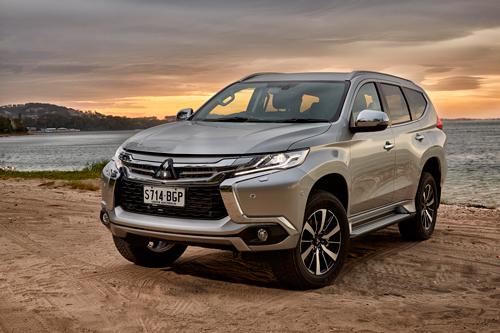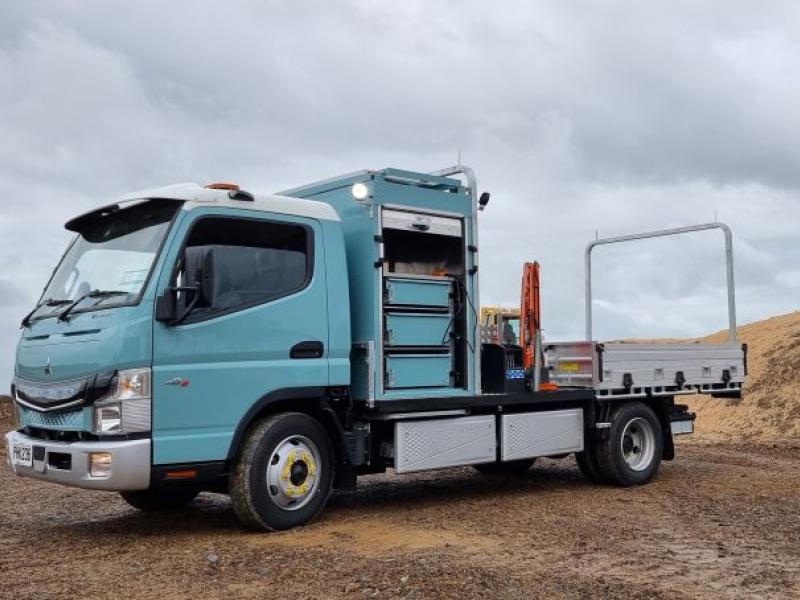A name change is not the only thing that’s happened with the Mitsubishi Pajero Sport – the vehicle is new from the ground up, says Damien O’Carroll.
Mitsubishi has done a Land Rover and cheekily slid a new, far more modern vehicle under the Pajero name by introducing the Pajero Sport.
Just as Land Rover did when it replaced the Freelander with the Discovery Sport, Mitsubishi has replaced the Challenger with the all-new Pajero Sport.
Based on the Triton ute underpinnings, Mitsubishi expects the Pajero Sport to not only replace the Challenger, but also soak up those Pajero buyers who yearn for something more modern.
The Pajero Sport comes to New Zealand in two forms, both powered by the Triton’s 135kW/437Nm 2.4-litre diesel four-cylinder engine that is hooked up to an all-new eight-speed transmission.
The XLS kicks off the range at $58,990 and comes standard with 18-inch alloy wheels, keyless entry and start, privacy glass, daytime running lights, climate control, cruise control, rear parking sensors and Mitsubishi’s new Smartphone Link Display Audio system that includes Apple CarPlay and Android Auto and is controlled via a 7-inch touchscreen.
The VRX tops the range at $63,990 and adds 18-inch machine finish ally wheels, LED headlights, DRLs and taillights, leather upholstery, electrically adjustable and heated front seats, a premium 8-speaker audio system, dual zone climate control, a reversing camera, forward collision mitigation, blind spot warning, an ultrasonic mis-acceleration prevention system, automatic headlights and rain sensing wipers.
A seven-seat version of the Pajero Sport is expected to arrive in New Zealand later in 2016 and will ask a $2,000 premium on both the XLS and VRX models.
Of course, the Pajero name is synonymous with proper off-road ability, and the Sport is no different than its older namesake in this particular regard.
As well as being based on the same ladder chassis platform as the Triton ute, the Pajero Sport is also fully loaded with the latest off-road technology to complement its proven underpinnings.
The “off-road mode” dial in the centre console allows drivers to select from four different off-road modes including gravel, mud/snow, sand and rock. Mitsubishi says that this system optimises traction parameters – wheel spin, transmission, brake force and engine power – for maximum off-road capability. The Pajero Sport also comes standard with hill descent control which holds the vehicle at a constant speed on a steep gradient.
Perhaps the biggest advantage the Pajero Sport has over the Triton off-road is the brilliant new eight-speed automatic transmission. Remarkably well-spaced ratios actually minimise the amount of time the hill-descent system even needs to cut in and descending the terrifyingly steep sand dunes on our test drive around the Worimi Conservation Lands at Stockton Beach in New South Wales, Australia, was usually accomplished with the transmission effortlessly setting the pace.
The transmission is also a massive advantage on the road as well, being an incredibly quick and smooth shifter that brings a massive amount of refinement to the 2.4-litre diesel engine. While it is still clearly a diesel, the slick work of the auto transmission minimises much of the traditional diesel intrusion.
The engine itself is fantastically torquey — and surprisingly frugal — and makes fairly light work of propelling the Sport along at a more than acceptable rate.
While replacing the Triton’s leaf-sprung rear with a coil-spring set up, the Pajero Sport still feels like a proper ladder-chassis 4WD, but it is a remarkably refined one that has a comfortable and polished ride.
Inside the Pajero Sport is light years ahead of the Challenger, with a modern interior made from high quality plastics, with lots of soft-touch surfaces.
While looks are notoriously subjective, I have to say that I went from not particularly warming to what I had saw of the Pajero Sport in photos to utterly loving it in the metal. It is not a vehicle that photographs particularly well, but it possesses a handsome, well-sculpted presence in the metal.
The newest interpretation of Mitsubishi’s “Dynamic Shield” nose looks fantastically aggressive and refined on the Sport, while the dramatically tapering rear side windows and heavily sculpted taillights may be a bit confrontational for some, but give the Pajero Sport and unmistakable appearance from behind.
Extraordinarily capable off the road, refined and comfortable on it and very well equipped and priced, the Pajero Sport not only takes the Pajero name into previously unexplored new technological territory, but should also help Mitsubishi continue its six-year run of sales growth.






